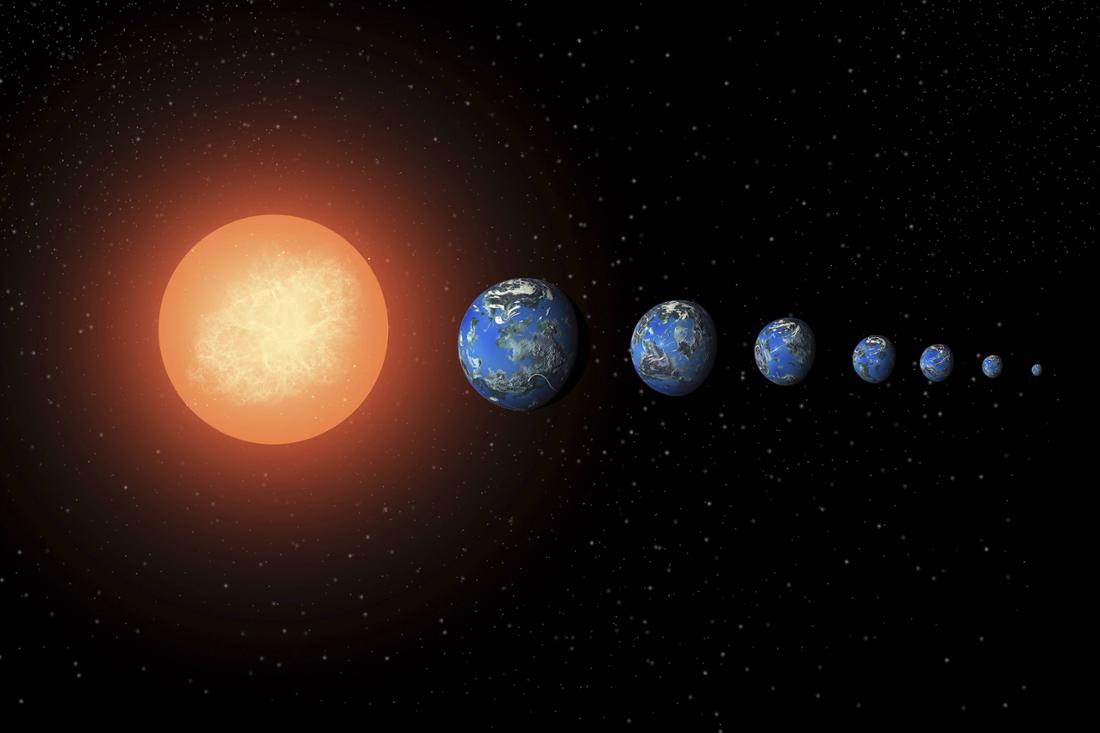New research results could make the search for liquid water and life on exoplanets a little easier in the future.
Cambridge – More than 5,500 exoplanets – planets outside our solar system – are known to date. But life has not yet been detected on any of them and liquid water is also a rarity in the universe. However, that doesn’t mean it isn’t being looked for. A research team has now found a new way to identify liquid water on an exoplanet.
To do this, a team made up of researchers from various universities did not look outside the solar system at all. In fact, it was found in the immediate vicinity of Earth, as Amaury Triaud (University of Birmingham), co-leader of the study, explains. “An idea came to us when we looked at what was happening to the terrestrial planets in our own system,” the researcher said in one notice.
Search for liquid water on exoplanets: Venus, Earth and Mars provide the clue
Venus, Earth and Mars have several things in common: Among other things, they are made of rock and orbit the sun in a relatively temperate region. However, there are also clear differences: only Earth currently has liquid water – at the same time, Earth has significantly less carbon dioxide in its atmosphere than the other two planets. “We assume that these planets formed in a similar way,” says Triaud, and continues: “If we now see a planet with much less carbon, it must have disappeared somewhere.”
But how can carbon dioxide disappear from the earth’s atmosphere? “The only process that could remove so much carbon from an atmosphere is a strong water cycle with oceans of liquid water,” emphasizes the expert. Over hundreds of millions of years, Earth’s oceans would have absorbed an amount of carbon dioxide almost equal to the amount now in the atmosphere of Venus. That is why the Earth’s atmosphere contains significantly less carbon dioxide than its planetary neighbors.
A lot of carbon dioxide was bound in seawater and rocks on Earth
“On Earth, much of the atmospheric carbon dioxide was bound in seawater and solid rock over geological time, which helped regulate the Earth’s climate and habitability over billions of years,” explains study co-author Frieder Klein. The research team comes into the study that in the specialist journal Nature Astronomy published concluded that it had found a reliable signal for liquid oceans and possibly even life on the surface.
“After extensive review of the literature from many areas, from biology to chemistry to carbon sequestration in the context of climate change, we believe that if we do indeed see carbon depletion, it is most likely a clear sign of liquid water and/or or life,” says Julien de Wit (Massachusetts Institute of Technology), co-leader of the study.
Focus on planetary systems with multiple terrestrial planets
According to the team, when searching for liquid water on exoplanets, one should first focus on planetary systems in which several terrestrial planets are close together. The first step should therefore be to find out whether there are any atmospheres around the planets. Once you have identified several planets with atmospheres, you can measure the carbon dioxide content of the atmospheres. “Carbon dioxide is a very strong absorber in the infrared and can easily be detected in the atmospheres of exoplanets,” explains de Wit.
If a planet has significantly less CO₂ in the atmosphere than the other planets, it is probably habitable – with large amounts of liquid water on the surface. However, that does not mean that the planet is inhabited. To find out, the study says researchers should look for another component of the atmosphere: ozone.
“When we see ozone, there is a pretty good chance that it is related to carbon dioxide being consumed by something living,” Triaud points out. “And if it is life, then it is magnificent life. It wouldn’t just be a few bacteria. It would be a planetary-scale biomass capable of processing and interacting with a huge amount of carbon.”
James Webb Space Telescope can measure carbon dioxide and possibly ozone
The research team assumes that the James Webb Space Telescope (JWST) of the space organizations Nasa, Esa and CSA will be able to measure carbon dioxide and possibly ozone in nearby planetary systems – good news for research, such as de Wit explains: “Despite many early hopes, most of our colleagues had concluded that large telescopes like the JWST would not be able to detect life on exoplanets.”

The scientist believes that this is changing with the new research results: “Our work gives new hope. By harnessing the signature of carbon dioxide, we can not only infer the presence of liquid water on a distant planet, but also find a way to identify life itself.”
The planetary system “Trappist-1” is particularly interesting for this method. It consists of seven terrestrial planets and is only about 40 light-years from Earth. The “Trappist-1” planets have already been in the sights of the JWST space telescope and will continue to be studied in the future.
“’Trappist-1′ is one of the few systems in which we can carry out atmospheric studies with JWST,” says de Wit. “Now we have a roadmap for finding habitable planets. If we all work together, paradigm-shifting discoveries could be made in the next few years.” (tab)

